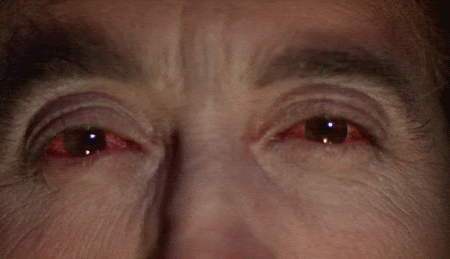-
Summer Savings: Save 20% On LASIK , Find More
*Must mention this promotion and be treated in August of 2024 to qualify. 20% off standard price of Wavelight procedure. Cannot be combined with any other offers.
Pink Eye 101; What is it, How to Get Rid of it & How to Prevent it
Filed under Bad Surprises: taking a big swig of expired milk, accidentally putting your new cashmere sweater in the dryer, and waking up with a bad case of pink eye.

This condition is one of the most common eye problems across the U.S.; according to this study around 40% of the population will experience it in their lifetime. Sorry folks. But wait! It’s not the end of the world. No, really. Pink eye isn’t a whole lot of fun, but if you know what it is, how to treat it, and most importantly, how to avoid it, you’ll be just fine.
Today we’re covering everything you need to know about pink eye, so keep scrolling to learn more!
First of All; What is Pink Eye?
We all know a little bit about pink eye: it’s a funky eye infection that turns your eye (or eyes) a pinkish color. But, what is pink eye exactly? Basically, pink eye (or the medical term, Conjunctivitis) is an infection that inflames and irritates the tiny membranes that cover the white part of your eyeball. When these small blood vessels become inflamed, they become more visible- making the whites of your eyes appear pink or even red.
What are the symptoms of pink eye? Well, if you’re experiencing the following symptoms, you’re probably experiencing a case of pink eye:
- Red or pink eyes
- Itchiness in one (or both) of your eyes
- Burning sensation in your eyes
- A gritty feeling when you blink
- Discharge coming from your eyes that forms a crust when you’re asleep
- Excess tearing or watering
- Abnormal sensitivity to light
If you’re reading this thinking, “Yep- dang it- I definitely have pink eye,” keep scrolling for a few important things you should know about this common eye infection.

Is Pink Eye Contagious?
The kind of pink eye resulting from bacteria, or viruses, is very contagious, and can be easily spread from person-to-person. (This is why you usually hear about whole football teams or families contracting pink eye at the same time.)
However, pink eye caused by allergies or foreign objects is not contagious, meaning you won’t pass it on to anyone.
Sometimes it’s hard to tell where the pink eye actually came from, so as a general rule of thumb, approach your pink eye as though it’s contagious until you know for sure that it’s not.
Here are the 4 main types of pink eye:
Viral Pink Eye
Viral infections are the most common cause of pink eye. This basically means that you have a cold in your eye. In fact, viral pink eye is most often accompanied by a cold or upper respiratory infection.
This type of pink eye is contagious, so be careful about who and what you’re coming in contact with during your infection.
Bacterial Pink Eye
This is the second most common cause of pink eye. Bacterial pink eye often occurs along with an ear or strep infection. It usually causes a lot more mucus and irritation than other pink eye would normally cause.
Like viral pink eye, this type of pink eye is also very contagious, so take care not to infect anyone else and follow the guidelines below for treating a bad case of pink eye.
Pink Eye Cause by Allergies
You might also experience pink eye when your body is trying to defend itself against a perceived threat- like mold, pollen, dust or animal dander. Unlike viral and bacterial pink eye, pink eye from allergies is not contagious.
Pink Eye Resulting from an Irritant
Pink eye can also be triggered by foreign objects in the eye like shampoos, cosmetics, dirt, smoke, and especially contact lenses. *booooooo!* This can happen when your lenses are worn longer than recommended or not cleaned properly.
This kind of pink eye is also not contagious, but it never hurts to be cautious.

How to Treat Pink Eye Quickly and Effectively
If you find yourself with a crazy case of pink eye, chances are you’re going to want to get rid of it- and fast. It’s important to note a few things here.
First, your pink eye will probably go away on its own- even if it’s viral or bacterial.
Second, if you have pink eye in only one of your eyes, you’ll want to treat the infected eye without contaminating the other in the process. If your other eye gets infected, that will extend the length of the illness, and shorten the span of your patience.
Here are some of the best ways to get rid of pink eye quickly and effectively:
Warm Compresses Help Soothe Pink Eye
To make a warm compress for your pink eye, soak a sanitized washcloth in warm water and wring it out before applying it (gently) to your closed eyelids.
Doctor’s Note: If you have pink eye in both eyes, use a completely different compress for each eye. This will prevent the infection from spreading from eye to eye.
Take OTC Pain Relievers for Pink Eye
Take over-the-counter pain relievers like ibuprofen or acetaminophen to help with the irritation and inflammation caused by your pink eye.
Doctor’s Note: Be sure to follow the instructions on the bottle, or clarify with your eye doctor before taking NSAIDS for your pink eye.
Stop Wearing Contact Lenses if You Have Pink Eye!
If you wear contact lenses, you should stop wearing them as soon as you develop symptoms or experience any discomfort.
Doctor’s Note: Ask your doctor how often you should be changing your contacts, as well as how to clean them effectively. Better yet, talk with your doctor to see if you might be a candidate for LASIK so you don’t have to mess with contacts ever again! (Could you imagine?)
Try Eye Drops for Your Pink Eye
Over-the-counter eye drops may be able to provide significant relief from pink eye symptoms.
Some over-the-counter eye drops contain antihistamines- or other medications- which can be very soothing for people with the kind of pink eye, especially the kind resulting from allergies.
According to this review, using antibiotic eye drops can shorten the duration of pink eye significantly. Talk to your eye doctor to see if this is a viable option for you.
Doctor’s Note: Don’t let the tip of the eye drop bottle touch your eye. If you do, throw it away and buy a new one- it’s contaminated!

Got Pink Eye? Here’s When to See a Doctor
Though pink eye can be incredibly irritating, it rarely has any lasting effect on your vision.
However, there are many other (more serious) eye conditions that can cause redness and irritation. If your pink eye symptoms haven’t improved within 12-24 hours, make an appointment right away to see your eye doctor. They’ll be able to rule out anything serious, and help you and your eyes get back on track- especially if you wear contacts.
How to Avoid Getting Pink Eye
Pink eye isn’t pleasant. If you want to avoid this common eye complication altogether, here are some of the best ways to completely avoid getting pink eye in the first place:
- Don’t touch your eyes with your hands.
- If you absolutely must touch your eyes, make sure your hands are completely clean!
- Always use a fresh face towel and washcloth.
- Don’t share eye makeup with anyone, even your closest friends and family.
- Change your pillowcases often.
- Toss out your contaminated or old eye makeup, and make sure to clean your makeup brushes with soap and water often.
- Don’t wear contact lenses!
The Final Word on Pink Eye
If you’ve googled pink eye remedies, you’ve probably come across some pretty wild suggestions (ahembreastmilkahem) but most of them will only serve to irritate you and your eyes further.
Stick to the tips we mentioned above for treating pink eye, and you’ll be on your way to infection-free eyeballs.
At the end of the day, one of the best ways to avoid getting pink eye is by… not touching your eyes. If you wear contacts, it’s time to ditch them once-and-for-all and give yourself the gift you truly deserve: complete 20/20 vision.
Call us today to schedule your free consultation, or book a free visit here!
YOU MIGHT ALSO LIKE...
VISION CENTERS NEAR ME
Enter your zip code, city, or a doctor name below to find a vision center.
Find out if LASIK is right for you
Congratulations!
Your vision issues can most likely be corrected with a LASIK procedure. Schedule a free consultation today.
Answer 5 simple questions to see if you are a candidate
What is your age group?
Do you wear...
With corrective lenses, do you have...
Have you ever been told that you have astigmatism?
Have you ever been told that you have dry eyes?
Request an Information Kit
Learn about your surgeon, the latest advanced technology, procedures, options and benefits, financing options, and what to expect from your LASIKPlus experience.









